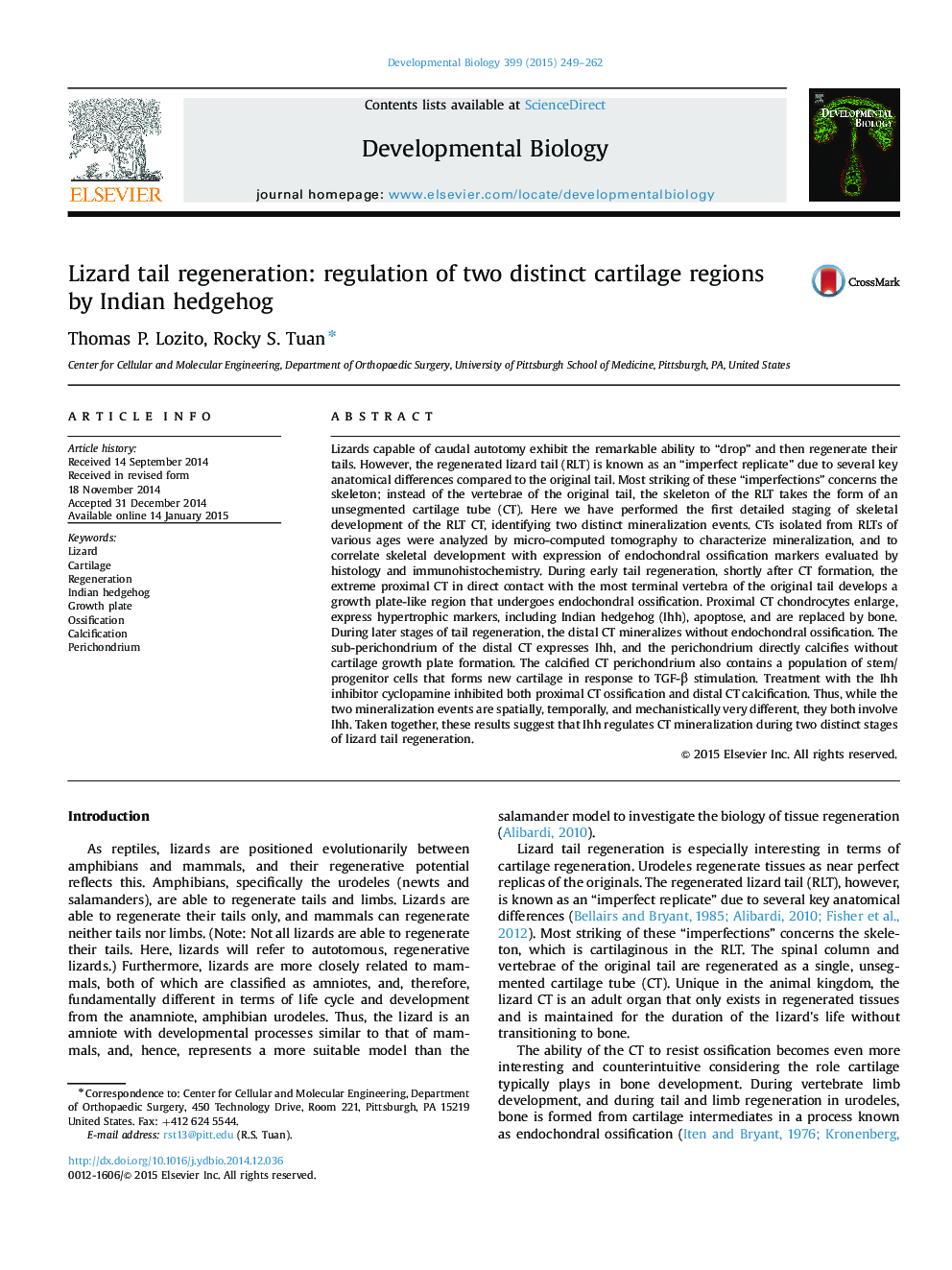| کد مقاله | کد نشریه | سال انتشار | مقاله انگلیسی | نسخه تمام متن |
|---|---|---|---|---|
| 2172949 | 1093655 | 2015 | 14 صفحه PDF | دانلود رایگان |
• The regenerated lizard tail skeleton takes the form of an unsegmented cartilage tube.
• The proximal cartilage tube undergoes endochondral ossification.
• The perichondrium of the distal cartilage tube directly calcifies.
• The calcified perichondrium contains a population of stem-like cells.
• Both the proximal and distal mineralization events are regulated by Indian hedgehog.
Lizards capable of caudal autotomy exhibit the remarkable ability to “drop” and then regenerate their tails. However, the regenerated lizard tail (RLT) is known as an “imperfect replicate” due to several key anatomical differences compared to the original tail. Most striking of these “imperfections” concerns the skeleton; instead of the vertebrae of the original tail, the skeleton of the RLT takes the form of an unsegmented cartilage tube (CT). Here we have performed the first detailed staging of skeletal development of the RLT CT, identifying two distinct mineralization events. CTs isolated from RLTs of various ages were analyzed by micro-computed tomography to characterize mineralization, and to correlate skeletal development with expression of endochondral ossification markers evaluated by histology and immunohistochemistry. During early tail regeneration, shortly after CT formation, the extreme proximal CT in direct contact with the most terminal vertebra of the original tail develops a growth plate-like region that undergoes endochondral ossification. Proximal CT chondrocytes enlarge, express hypertrophic markers, including Indian hedgehog (Ihh), apoptose, and are replaced by bone. During later stages of tail regeneration, the distal CT mineralizes without endochondral ossification. The sub-perichondrium of the distal CT expresses Ihh, and the perichondrium directly calcifies without cartilage growth plate formation. The calcified CT perichondrium also contains a population of stem/progenitor cells that forms new cartilage in response to TGF-β stimulation. Treatment with the Ihh inhibitor cyclopamine inhibited both proximal CT ossification and distal CT calcification. Thus, while the two mineralization events are spatially, temporally, and mechanistically very different, they both involve Ihh. Taken together, these results suggest that Ihh regulates CT mineralization during two distinct stages of lizard tail regeneration.
Journal: Developmental Biology - Volume 399, Issue 2, 15 March 2015, Pages 249–262
